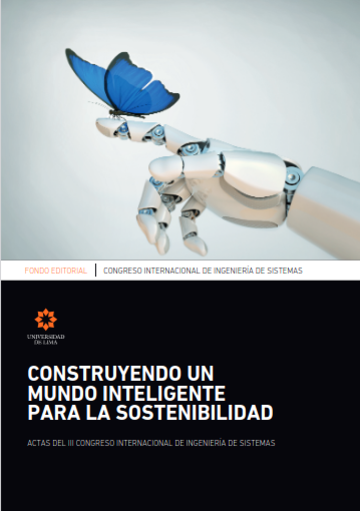Minería de datos: análisis de sentimiento en Twitter basado en lexicones sobre el uso de dióxido de cloro para el tratamiento del COVID-19
DOI:
https://doi.org/10.26439/ciis2020.5477Palabras clave:
análisis de sentimiento, dióxido de cloro, Twitter, COVID-19Resumen
El COVID-19, según la Organización Mundial de Salud (OMS), es la “enferme dad infecciosa causada por el coronavirus que se ha descubierto más recientemente”. Para el tratamiento del COVID-19 se han informado por diferentes medios diversos productos, entre ellos se tiene al dióxido de cloro; se dice que puede curar y prevenir el COVID-19 porque incre menta los niveles de oxígeno en la sangre; también expertos en la salud indicaron que es falso y, por el contrario, esta sustancia puede oxidar la hemoglobina y desencadenar más problemas de salud. Se planteó el objetivo de desarrollar un modelo de minería de datos sobre el análisis de sentimiento en Twitter basado en lexicones sobre el uso de dióxido de cloro para el tratamiento del COVID-19, para su desarrollo se usó la metodología CRISP-DM y la herramienta Orange Canvas. En los resultados se obtuvo que la palabra dióxido de cloro está asociada a las palabras sí, tomar y COVID; por otro lado, la opinión de las personas en relación al dióxido de cloro, con tendencia a negatividad y neutralidad, dan como resultado calificaciones compuestas, lo que significa que 4500 tuits de los usuarios de Twitter tienen opiniones de neutralidad y rechazo en distintas proporciones sobre el tratamiento del dióxido de cloro para el COVID-19.
Descargas
Referencias
Agencia para Sustancias Tóxicas y el Registro de Enfermedades. (2004). Dióxido de Cloro y Clorito. Edición del Autor.
AS Perú. (26 de julio del 2020). Qué es y para qué sirve el dióxido de cloro y qué dice el Minsa sobre su uso. https://peru.as.com/peru/2020/07/26/actualidad/1595791000_910 783.html
Cabezas Sánchez, C., Solari Zerpa, L., y Caballero Ñopo, P. (2020). Eficacia y seguridad del dióxido de cloro para el tratamiento de COVID-19. Instituto Nacional de Salud, 2-10.
EGilbert, H. (2014). VADER: A Parsimonious Rule-based Model for Sentiment Analysis of Social Media Text. Conference on Weblogs and Social Media (ICWSM-14).
González Figueroa, M. (2018). Búsqueda, descubrimiento y análisis de sentimientos en Twitter de la institución [Tesis de maestría, Universidad Técnica Federico Santa María]. https://www.mti.cl/wp-content/uploads/2019/01/Tesina_2018_Gonz%C3%A1lez-Marcela.pdf
Mitra, S., y Acharya, T. (2005). Data Mining : Multimedia, Soft Computing and Bioinformatics. Wiley.Organización Mundial de la Salud. (2020). Preguntas y respuestas sobre la enfermedad por coronavirus (COVID-19). https://www.who.int/es/emergencies/diseases/novel-coronavirus-2019/advice-for-public/q-a-coronaviruses?gclid=EAIaIQobChMIi-T4iYK46wIVeP7jBx1czw11EAAYASABEgKmh_D_BwE
Orgaz, C. J. (15 de abril del 2020). Coronavirus | Dióxido de cloro, el peligroso químico que se promociona como cura para el COVID-19 y sobre el que advierten los expertos. https://www.bbc.com/mundo/noticias-52303363
Orihuela, J. L. (2011). Mundo Twitter. Alienta.
Rubín, R. (22 de mayo del 2020). Qué es Twitter, cómo funciona y qué te puede aportar esta red social. Ciudadano 2.0. https://www.ciudadano2cero.com/twitter-que-es-como-funciona/
Trucco, F. (6 de agosto del 2020). Bolivia aprueba dióxido de cloro como tratamiento para corona- virus. https://cnnespanol.cnn.com/2020/08/06/camara-de-diputados-de-bolivia-aprueba-dioxido-de-cloro-como-tratamiento-para-coronavirus/
Vallalta Rueda, J. F. (s. f.). CRISP-DM: una metodología para minería de datos en salud. Health Data Miner. https://healthdataminer.com/data-mining/crisp-dm-una-metodologia-para-mineria-de-datos-en-salud/


